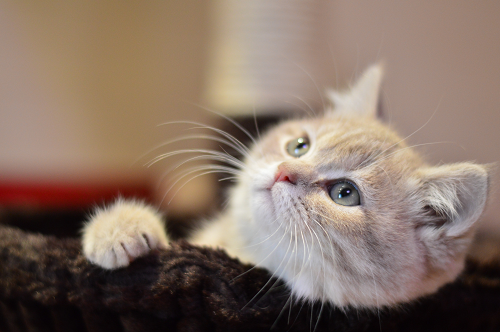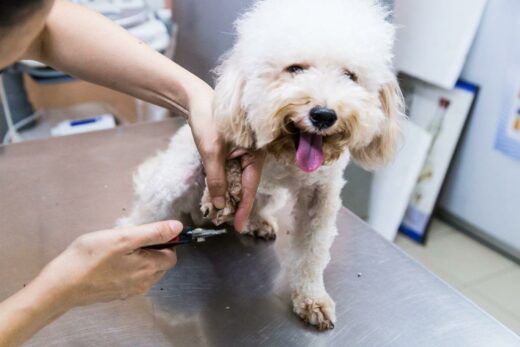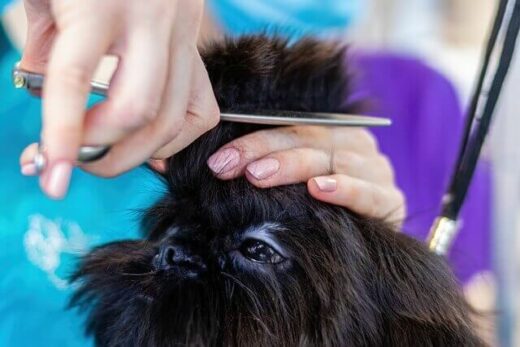Cats are known for many things: their soothing purr, their sleek looks, and their infamously strong independent streak. This personality trait can be a benefit for pet owners looking for companionship (but not keen on walks); however, it can also be a source of frustration. As any cat owner can attest, it doesn’t take long for the corners of couches, chairs, and ottomans to become ragged and shredded under the not-so-gentle attentions of a feline. Saving the furniture requires some forethought and planning on the part of a cat owner.
Should I Groom My Cat?
The short answer, for most cats, is no – an owner shouldn’t groom their cat or attempt to give them a bath. A cat’s sandpaper-like tongue acts as a hairbrush, and their constant licking removes dead fur, dirt, and debris. For certain long-haired breeds, an occasional trim might help cut back on hairballs and bathroom messes, but in general, cats handle their own grooming. Even a cat’s furniture-frustrating claw-sharpening is deliberate grooming: he is removing outer sheaths of his nail keratin to keep the tips sharp. Just as a human might remove an annoying hangnail with a pair of nail clippers, the digging and pulling motion pulls away ragged, broken, or worn-down areas of a cat’s claws.
How to Trim Cat Nails
Most vets agree, and in some cases state legislatures do too: declawing is painful and unnecessary for a cat. Rather than permanently removing his nails, regular clipping achieves the same results without pain and trauma. As explained on I Heart Cats.com, “The frequency of trimming is going to depend on the individual cat, but when the nails look (or feel) really sharp, it is probably time.” 
As with all unfamiliar and potential uncomfortable things, it’s important to approach cat nail clipping like a strategic battle – slowly, deliberately, and armed with everything necessary for scratch-free victory. Below are some useful claw-cutting tips for kitties:
- The earlier, the better: If a cat is exposed to nail clipping in kittenhood, he’s less likely to be spooked by the process as he gets older. His owner should introduce him to the clippers as a stationary object, placing a treat on the handle to help enforce positive associations. Even if a kitten doesn’t need nail clipping just yet, starting these associations young will help the process later on.
- Choose the right clippers: Most animal experts recommend a simple overlapping cutter for trimming a cat’s nails. Human nail clippers are not the right tool for the job, as they’re designed for flat nails and not the round cylinders of animal claws. Using these flat clippers on cat claws is likely to cause splintering or even pain.
- Get him used to paw-holding: Cats do not, as a general rule, like to have their paws touched. Not only are these paws their means of mobility and body support, they’re also their evolutionary food-hunting tools. Avoid this discomfort by gently stroking the tops of his paws and massaging the pads while he is sleepy or amenable to it. The more comfortable he is with the concept, the easier the clipping process will be. A few well-placed treats work well here, too!
- Get him used to the sound and motion: Even when he’s familiar with the physical clippers and the concept of his paws being manipulated, the loud “click” of the clippers cutting a nail can spook a cat. The AKC recommends mimicking nail clipping while concealing a piece of uncooked spaghetti in the palm, feeding it into the clippers. From the cat’s point of view, his paw is held, the clippers are present, and the sound is heard, but there’s no sensation to worry about.
- Identify and avoid the quick: Cats’ claws are translucent, and a thin red strand through the center holds all the blood vessels and nerve endings for the claw. This strand is called the quick, and it should never be cut or disturbed. Only the first 1/8th to 1/4th of a claw tip needs to be trimmed, so a would-be nail trimmer should err on the side of caution and stay away from the nail base.
- Take it slowly – there’s no rush: While the temptation may be to restrain a cat and cut all of his nail tips at once, this has a high potential to be traumatizing to both cat and owner. Even if a full nail trim needs to happen over the course of several days, it’s better to go slowly than rush through and accidentally get scratched or cut the quick mid-claw. For owners who have tried various methods to no avail (or don’t feel confident enough to see the task through), a trusted vet or professional pet groomer can assist with nail trimming.





